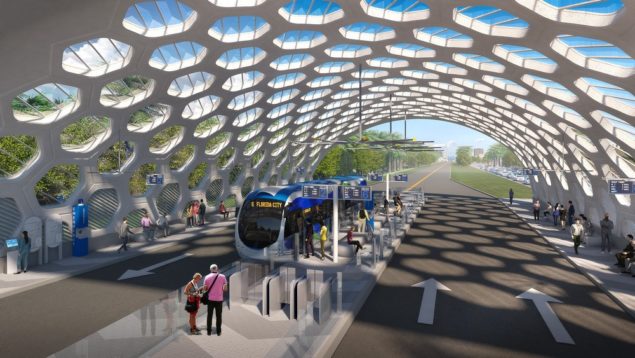
In my previous columns, I provided an overview of the successful municipal and roadway components of the People’s Transportation Plan, or PTP, the list of transportation projects approved by Miami-Dade County voters in 2002 as part of the “half-penny” sales surtax.
In this third and final part of the series, I focus on the proposed transit components of the PTP that were included in the original ballot language approved by voters. As a reminder, here is that language as it appeared on the ballot:
“Shall the County implement the People’s Transportation Plan including: Plans to build rapid transit lines to West Dade, Kendall, Florida City, Miami Beach and North Dade; expanding bus service; adding 635 buses; improving traffic signalization to reduce traffic backups; improving major and neighborhood roads and highways, including drainage; and funding to municipalities for road and transportation projects by levying a half percent sale surtax whose proceeds will be overseen by the Citizens’ Independent Transportation Trust?”
The unfortunate truth, after 17 years, is that several of the transit components promised to the voters have yet to be delivered, but it would be unfair to say that nothing has been accomplished or that surtax proceeds were largely spent elsewhere. Indeed, around two-thirds of surtax proceeds — nearly $2 billion of the $3 billion collected since 2002 — have, in fact, been spent on transit (not including the millions spent on municipal transit systems). These expenditures include the expansion of Metrorail to Miami International Airport along the new Orange Line; purchase of new Metrobus, Metromover and Metrorail vehicles; some new bus service; development of several park-and-ride stations and associated Express Bus service throughout the county; critical infrastructure upgrades; fare-free transit for all seniors (Golden Passport), lower-income veterans (Patriot Passport), and Metromover patrons; and most controversially, subsidies for the operations and maintenance (O&M) of the existing transit system.
Surtax proceeds also are funding the expansion of Tri-Rail into MiamiCentral Station in Downtown Miami (currently in progress), the recently approved Aventura Station for Brightline/Virgin Trains and future commuter rail service along that line; and Bus Rapid Transit (BRT) service along the South Dade Corridor. That final project is one of the six corridors of the Strategic Miami Area Rapid Transit (SMART) Plan, a renewed effort to fulfill the promised rapid transit corridors from the original PTP, all of which are in some phase of early development.
But while we should celebrate our achievements, we also must acknowledge our shortcomings. The promised expansion of rapid transit to every corner of the county remains largely unfulfilled, although advancement of the SMART Plan aims to address that; and the promised expansion of bus service by 63 percent remains largely unmet, with only a 5 percent growth in bus service since 2002.
So what happened?
My best understanding of the situation we find ourselves in is as follows:
• A half-cent seemingly was never enough to complete the original list of projects within the promised timeframes due to the various compromises that were necessary to ensure its passage (such as cutting the one-cent down to a half-cent, the diversion of 20 percent of proceeds to municipalities, fare-free programs, etc.), and due to some overly optimistic assumptions of costs and levels of federal/state financial contributions;
• It became clear during the federal application process for the North Corridor that we would never receive federal financial assistance without first addressing the many deteriorating infrastructure and operational needs of the existing system. In lieu of adequately funding these necessary improvements through the general fund, the county has instead used surtax funds to invest in upgrades to the existing infrastructure in order to serve as a foundation for the new projects;
• The fiscal and economic crisis created by the great recession, followed by the sharp decline in ridership these last few years, have further strained the county’s resources and required an infusion of additional PTP funds to continue to shore up the existing system, including subsidies for O&M; and
• There is an understandable reluctance by officials and the public to raise additional revenues, including property taxes or another half-penny sales tax, to fund transit at the levels necessary to cover the true costs of critical infrastructure upgrades and O&M of the existing system, while also expanding the system in accordance with the promises of the PTP.
In the end, the PTP record is mixed…many of the promises have been achieved; many remain unfulfilled; and many are in some state of progress. What is clear is that transportation remains one of this county’s greatest challenges, and the PTP and half-penny surtax will remain critical to addressing this challenge well into the future.
At the Citizens’ Independent Transportation Trust, we remain committed to providing the critical oversight necessary for ensuring that these challenges are met and that the promises made to voters are ultimately fulfilled.
Javier A. Betancourt, AICP, is executive director of the Citizens’ Independent Transportation Trust (CITT).






Comments are closed.